EDUCATI N
The magazine of the Virginia Education Association
October 2023

The magazine of the Virginia Education Association
October 2023
Positive relationships, with both students and colleagues, make all the difference.

INSIDE
• Rethinking our approach with ESL students upg.13
• Change: is it all in your head? upg. 18
• Big step forward in Montgomery County upg. 21
“I’d like to thank my dad for his help on my science project. He should be up and walking in a few weeks.”
Editor Tom Allen
VEA President
Dr. James J. Fedderman
VEA Executive Director Dr. Brenda Pike
Communications Director
Kevin J. Rogers
Graphic Designer
Lisa Sale
Editorial Assistant/Advertising Representative Kate O’Grady
Contributors
Brad Hutchinson Sarah Tanner-Anderson Steve Hicks Bruce Ingram
Fabiana Parker
Richard R. Russey
Vol. 117, No.1
Copyright © 2023 by the Virginia Education Association
The Virginia Journal of Education (ISSN 0270-837X) is published six times a year (October, November, December, February, April and June) by the Virginia Education Association, 116 South Third Street, Richmond, VA 23219. Non-member annual subscription rate: $10 ($15 outside the U.S. and Canada). Rights to reproduce any article or portion thereof may be granted upon request to the editor. Periodicals postage paid in Richmond, VA.

Postmaster: Send address changes to Virginia Journal of Education, 116 South Third Street, Richmond, VA 23219. Article proposals, comments or questions may be sent to the editor at tallen@veanea.org or Tom Allen,116 South Third Street, Richmond, VA 23219, 800-552-9554.
Member: State Education Association Communicators
VEA Vision:
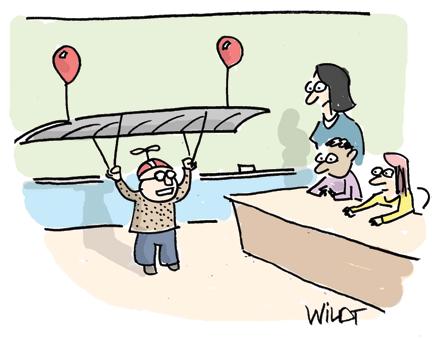

A great public school for every child in the Commonwealth of Virginia.
VEA Mission:
The mission of the Virginia Education Association is to unite our members and local communities across the Commonwealth in fulfilling the promise of a high quality public education that successfully prepares every single student to realize his or her full potential. We believe this can be accomplished by advocating for students, education professionals, and support professionals.
(tie) Gender Queer: A Memoir by Maia Kobabe; Flamer, by Mike Curato
Tricks, by Ellen Hopkins
(tie) The Handmaid’s Tale: The Graphic Novel, by Margaret Atwood and Renee Nault; Crank by Ellen Hopkins
Sold, by Patricia McCormick; Push, by Sapphire; A Court of Mist and Fury by Sarah J. Maas
This Book is Gay, by Juno Dawson; The Bluest Eye, by Toni Morrison; Milk and Honey, by Rupi Kaur
“Don’t join the book burners. Don’t think you are going to conceal faults by concealing evidence that they ever existed. Don’t be afraid to go into your library and read every book, as long as that document does not offend our own ideas of decency. That should be the only censorship.”l
— Dwight D. Eisenhower, speaking at the graduation ceremony of Dartmouth College in 1953
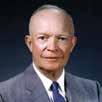
“Books have always shaped how I experience the world. Writers like Mark Twain and Toni Morrison, Walt Whitman and James Baldwin taught me something essential about our country’s character. Reading about people whose lives were very different from mine showed me how to step into someone else’s shoes…As I’ve said before, not only is it important for young people from all walks of life to see themselves represented in the pages of books, but it’s also important for all of us to engage with different ideas and points of view.”l
— Barack Obama, in an open letter to librarians in July 2023
Here are the most-frequently mentioned responses to a survey by Merrimack College and the EdWeek Research Center asking educators what steps their division or school could take to better support their mental well-being:
67 percent: A pay raise or bonus to reduce financial stress
62 percent: More/better support for student discipline issues
62 percent: Smaller class sizes

57 percent: Fewer meetings and less paperwork

54 percent: More acknowledgement of good work/hard work/successes

52 percent: More and better substitute teachers
52 percent: Permitting/encouraging mental health/ wellness days

The least-frequently mentioned response?
2 percent: I can’t think of any steps my division or school could take.l
1,393
We’ve heard a lot about the shortage of school counselors and, in many states, unhealthy students-per-counselor ratios, but the problem doesn’t end there. Our students need many more school psychologists, too.

The National Association of School Psychologists recommends a standard of one psychologist for every 500 students, but figures put our national average for the 202223 school year at 1,127 students per psychologist—and Virginia’s figure (above) is even worse.l
BRAD HUTCHINSON
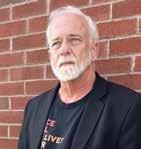
BRISTOL VA EDUCATION ASSOCIATION
High School English Teacher
What’s something you like about your job?
I love being an English teacher because I get to grow along with my students as they extend their skills in thinking and communication. Reading and listening to their ideas enriches me. I am never bored because have students of all types with different backgrounds and as they develop their skills, they learn to understand and express their feelings and ideas. This allows me to learn about them as people and see the world through their eyes.

How has being a Union member helped you?
It has helped me learn and improve skills, and focus my activism in a way that feel that I’m contributing on a local and state level. VEA has also honed my skills in organizing, educating my peers, and teaching in general. Through departments such as Human and Civil Rights, Teaching and Learning, and Government Relations and Research, continuously learn more about the education profession and the issues that matter to us all. l

The PUMP (Providing Urgent Maternal Protections) Act is a federal law, passed in 2022, that guarantees women in the workplace the right to pump breast milk. Among the provisions of the law are that the lactation space should be private—shielded from view and intrusion— and that it cannot be a bathroom. Further, when a woman asks for breast-pumping accommodations, her employer must engage in an “interactive process” that includes a goodfaith conversation to create those accommodations.
VEA members have long had this issue in their sights, fighting for and getting a similar state law passed in 2014.
Under the federal PUMP Act, covered employees are entitled to break time “each time such employee has need to express the milk” for one year after a child’s birth. Employers may not deny this right.
If you’re having issues getting your school system to cooperate with your breast-pumping needs, contact your local UniServ Director.l


Some chuckles sent in by Reader’s Digest subscribers:
When her child’s towel was stolen during a school swimming trip, an irate parent demanded of me, “What kind of juvenile delinquents are in class with my child?!”

“I’m sure it was taken accidentally,” I said. “What does it look like?”
“It’s white,” said the parent. “And it says ‘Holiday Inn’ on it.”

Just before the final exam in an economics class, a less-than-stellar student approached me.
“Can you tell me what grade I would need to get on the exam to pass the course?” he asked.
I gave him the bad news: “The exam is worth 100 points. You would need 113 points to earn a D.”
“OK,” he said, “and how many points would I need to get a C?”
I had finished my English lecture and my class had filed out, a tenth-grader stayed behind to confront me.
“I don’t appreciate being singled out,” he told me.
I was confused. “What do you mean?”
“I don’t know what the ‘oxy’ part means, but I know what a ‘moron’ is, and you looked straight at me when you said it.”l
Education support professionals are critical to all that goes on in the school community… We keep our schools running and play a pivotal role to ensure our students get all the supports they need to succeed. From sun-up to well past sundown, we work alongside a team of fellow educators to ensure the best learning environment for our students. And we love it. We are all professionals, and we should be valued as professionals. Appreciation days and social media shoutouts are fine, but it is time for school and district leaders and our elected officials to take action. We deserve fair pay and benefits, access to quality professional development, mental health care, and so much more.l
— Pamella Johnson, an academic and behavioral intervention specialist from the state of Washington and NEA’s 2023 Education Support Professional of the Year

“Before you confiscate my phone, can I tweet that you’re confiscating my phone?”

In response to a question posed to readers of The Atlantic about whether parents should stop giving their children smartphones before high school, a teacher who gave his name as Eric said:
“I don’t mind overcrowded classrooms— but then, I’m a sardine.”
“Cell phones are the single biggest addiction, obsession, and obstacle to learning, maturing, and socializing that I have seen in almost 20 years as an educator. Most students—hell, most adults—are powerless to resist the temptation to stay continually connected to their phones. Students know better than anyone just how distracting and disruptive they are, and, if being honest, will almost unanimously say that they are better students and people when their phone is out of sight. The fact that more schools do not help students by removing the single greatest hindrance to the educational experience we have ever seen is baffling, and it will not be seen favorably by those who look back at it."l

Building common ground, with both your students and your colleagues, makes an incredible difference. Here’s a ‘Top 10’ to help you do that in the new year.
By Steve HicksPerhaps nothing is more important to our success as educators than how well we build relationships in our school communities. The best way to help students reach their full potential is by creating and encouraging positive relationships with them. “Students don’t care how much you know until they know how much you care” is a famous quote attributed to several people and often referred to in school circles—because it’s true.
I have been part of public education my entire life. My family growing up has over 100 years of combined experience in the field: My father was a middle school principal, my mother was a special education teacher, my brother is a recently retired social studies teacher, and I’m about to enter my 30th year of education. In observing my family and in my own experience, have learned that building successful relationships is hard work that needs constant nurturing and reflection. One of my former principals, Ginger Minshew at Park
View High School in Loudoun County, often told us, “We need to model our academic and behavioral expectations for students.”
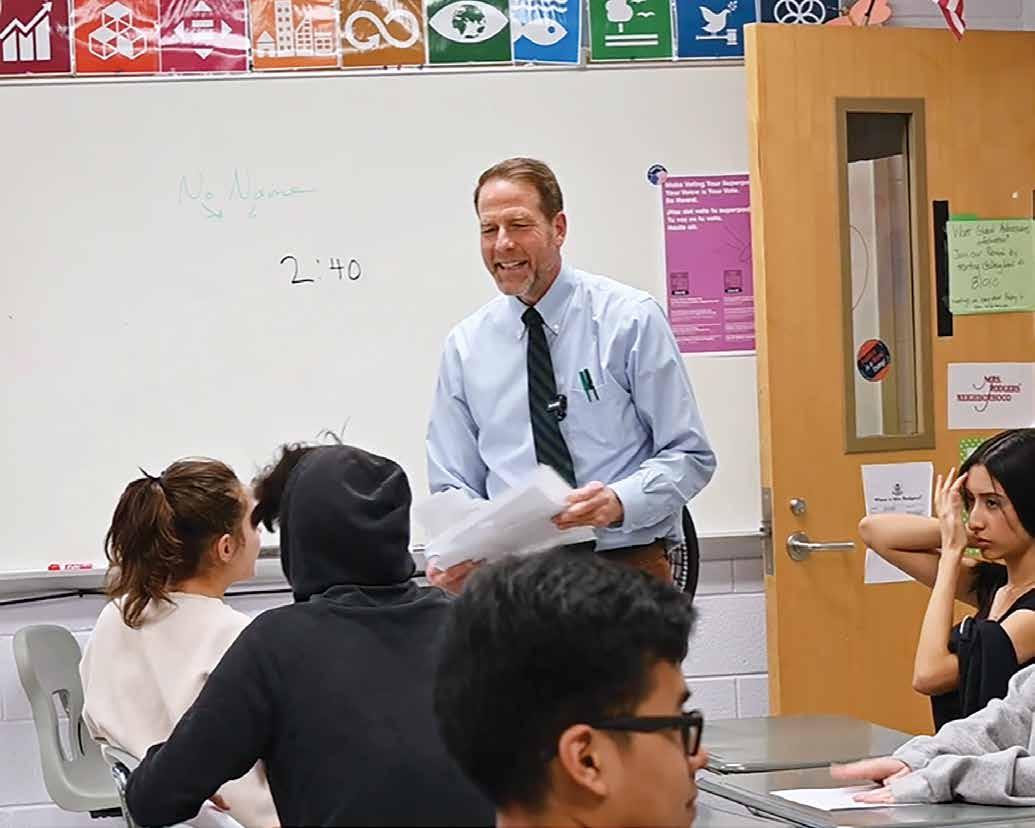
Here are10 methods I have learned for building meaningful, positive relationships in school:
1. Greet your students at the door.
Greeting my students as they walk into class is the most important action I take every day—it ensures our first interaction is a positive one. Sometimes I congratulate them on an accomplishment or give them a compliment. Even if a student is having a tough time, a simple gesture like this conveys that today is a new day with a clean slate. This also helps gauge a student’s emotional well-being. If a student appears mentally off, I know that may need to pull them aside or tweak my lesson plan according to my students’ energy level.
2. Learn your students’ names ASAP.
This is a simple way of making a positive first impression. As a child, I remember watching my father use class pictures from elementary schools in Amherst, Ohio to memorize students’ names and faces so he could greet them on their first day of middle school. When I asked what he was doing, he told me he was just getting ready for the school year. Just by knowing his students’ names, sometimes before they even knew his, he displayed how much he cared for his students as individuals. My current principal at Dominion High School, Dr. John Brewer, has taken that concept a step further by visiting the home of every incoming freshman.
Following in their footsteps, I also review my seating chart and look over the kids’ pictures before the first day, Googling the names I cannot pronounce. Incorporating “ice breaker” activities into bell ringers or morning meetings will help students learn about each other as well, which fosters a constructive classroom atmosphere.
3. Find time to talk to your kids one on one.
I try to talk to each of my students individually at least once every two weeks. I might sit with them while they are doing individual work or talk with them during announcements or in study hall. It doesn’t need to be a deep conversation—just a quick check-in allows teachers
to take those relationships to a deeper level. Additionally, taking the time to talk with students outside of class can help teachers understand how to motivate them, and may help you recognize more quickly when a student is in crisis.

Your students must know you like them and care about them. When I began my career in 1994, I just assumed my students knew I liked them as people. quickly learned I had to be concrete and explicit about this.
4. Ask questions.
Helping students find answers to their own questions or problems is far more powerful than telling them what to do. Sometimes kids just need empathy more than anything else, and a listening ear is the most important thing you can provide. If pull a student out in the hall to help them redirect their behavior, I always start the conversation with a calm, “Are you OK?” It is amazing how disarming that simple question can make even the most upset kid. By asking questions, I am guiding students to develop the ability to solve problems on their own.
5. Find ways to praise kids. My niece, Katie Hicks-Matusevich, a teacher in the Richmond area, often uses incentives, such as stickers, to build relationships with her third-graders. I have started keeping rewards like this on hand as well for my high-schoolers and will hand them out to kids for doing the right thing. My students love
them and sometimes keep them on their laptops for the rest of the year. My niece also recommended redirecting behavior by only giving positive attention to a student doing the right thing. If one student is on their phone, I will find another one who is engaged in the activity at hand and give them a sticker or compliment them for completing their work. It is amazing to me how often that gets the students who are off-task to redirect their focus. Another thing I do, too, is try to identify students who will be a challenge early in the school year and then find something they did well, thank them, and call their home. The parents’ initial trepidation on hearing from a teacher almost always turns to relief, then to happiness. Any issues that come up later become much easier to handle if the first interaction is positive.
6. Always say “hi” to folks. Relationships often start with a simple “Hi” and “How are you doing?” I make a point of greeting anyone see at school, including students, secretaries, other teachers, or janitors. This is a simple, easy gesture that models a lifelong skill to students and increases positive energy in the building. It is also another way to take the pulse of how a student is doing. Sometimes I have students reply, “Not well, Mr. Hicks,” which allows me to go into a deeper conversation about their mental needs. If you already know what might be bothering a student, ask them a specific
question about it or mention a previous conversation you have had with them. In other words, personalize the conversation. Students did not even have in class come back years after graduating and tell me I was the nice teacher in the hall.
7. Say thank you. Like “hello,” “thank you” is so easy to say and a crucial modeling behavior. If a student is helping me clean up after class, I always tell them, “I really appreciate that.” When I walk into the cafeteria after lunch to supervise study hall, the janitors are usually still cleaning tables and I always make a point of pitching in to help. I also like to thank our secretaries and ask if they need any help. Being a secretary is one of the hardest, most crucial jobs at a school, and I am always willing to get extra steps in by running an errand in another part of the building. Saying “thank you” or lending a hand is another way of modeling respectfulness to your students.
8. Ask for help.
If you do not know how to do something or see someone doing something well, ask for advice. It is human nature to attempt to figure out issues ourselves. However, this often slows us down and more importantly, eliminates an opportunity to allow others to be experts. Additionally, encouraging students to exhibit the same behavior fosters a positive classroom atmosphere. For example, technology is an area where students often have the edge over teachers. As part of my students’ research paper project, I require the students to make videos. I sometimes ask them to teach me the video software, which boosts their self-esteem and teaches me about video production. I also encourage them to help one another and ask some students if I can use their work as examples for the class. I take a similar approach as a department chair. Many of the techniques I use in my classroom come from observing other teachers. At
department meetings, I will often ask a teacher to display a new technique, which not only saves time but allows teachers young and old to display what they do best.
9. Say you’re sorry if you mess up. According to Education Week teachers make an average of 1,500 decisions a day. We are bound to make mistakes. I have apologized innumerable times. By modeling this behavior, which is crucial to improving students’ emotional intelligence, I find most students respect me for admitting my errors. There is nothing wrong with apologizing the next day if you realize you could have handled a situation in a better way.
10. Volunteer for extracurriculars. Being a part of a student’s life outside of the classroom fosters and deepens relationships. You often do not have to be an expert. My first year of teaching, I asked the academic challenge/ scholastic bowl coach, whom I did not know well at the time, if she needed help. I knew next to nothing about academic challenge/scholastic bowl, but the late Norma Bornorth at Broad Run High
Why positive teacher-student relationships are so important, according to Greater Good in Education, based at the University of California-Berkeley:


• Students do better overall with caring teachers. Studies have found that for Pre-K to 12 students, positive student-teacher relationships increase engagement, motivation, prosocial (kind and helpful) behavior, and academic achievement.
• Seeing students as individuals is key to their well-being and success. When teachers use practices that are sensitive to students’ individual differences and needs and that also include student voice, their students tend to be more motivated and show higher academic achievement; they also feel better about school, participate more, and show less disruptive behavior across grade levels.
• Negative teacher-student relationships can have long-lasting impact. Conflict-ridden relationships with teachers in kindergarten predict worse grades, work habits, and discipline problems into late elementary or even middle school.
• Relationships matter at every age. In preschool and kindergarten: When their relationships with teachers are more emotionally supportive and less conflictual, preschool students become more socially and academically competent; similar effects occur for kindergarteners. In elementary and middle school, close, positive relationships are associated with greater student engagement in learning and better social and behavioral outcomes in general, including less risky behavior. In high school, students who connect with their teachers are less likely to engage in risky behavior, including substance abuse, sexual activity, and suicide.
• Teachers benefit, too. They experience the joy of teaching, helping to maintain their commitment to the profession by preventing burnout.l
School taught me everything about coaching the activity. It turned out to be an absolute blast and a great way to get to know the kids. A few years later, I asked the school’s football announcer if he needed a spotter (a person who tells the announcer who carried the ball or made a tackle). Not only did I have something to talk about with the football players, dance team and band, but also have made some of my best friends in teaching. I enjoyed it so much became an announcer myself and have been doing it for the past 20 years. Meeting your students outside of school does not even need to be at regular events. I have gone to Eagle Scout ceremonies, religious services, and sporting events. Whenever a student invites me to something that demonstrates their passions, I try my best to attend.
Building relationships can be hard work. At the same time, seeing students thrive as they reach their potential is the greatest joy of teaching. I am often reminded of the words of civil rights icon and Supreme Court Justice Thurgood Marshall: “None of us got where we are solely by pulling ourselves up by our bootstraps. We got here because somebody—a parent, a teacher, an Ivy League crony, or a few nuns—bent down and helped us pick up our boots.” Helping students reach their goals is not happenstance. It takes thoughtful planning. We serve as role models and need to consider our actions carefully. There is no greater sense of fulfillment than when a graduate visits and tells you how much of an impact you’ve had on their life.l
Steve Hicks, a member of the Loudoun Education Association, is a social sciences teacher and department chair at Dominion High School. He was named a finalist for the 2023 Washington Post Teacher of the Year Award.
VEA leaders and staff kept their eyes on the ball over the summer.
Shenanigans in school policy doesn’t take a summer break, and neither does the vigilance of your Union. Here are a few examples of how VEA leadership and staff spoke out over the last few months, when the attention of many wasn’t as focused on public education as it normally is:
• As the school year wound down, Arlington Education Association President June Prakash said this, in a letter to the editor of the Gazette Leader co-written with Delegate Alfonso Lopez: “At a time when many students are requiring increased levels of educational, social, and/or emotional support as they recover from the effects of the pandemic, we are doing them a disservice by not doing more to recruit and retain effective educators…even though they may not want to, we are giving educators no other choice but to seek better compensation and a lower cost
of color get their full teaching license, VEA’s Director of Human & Civil Rights, Taisha Steele, said this to media outlets: “While half of the students in Virginia are students of color, more than 8 in 10 of our teachers are white. We know that all students benefit from diverse teachers, and these benefits are particularly pronounced for our students of color.”
of living: A path that will lead them away from Arlington.”
• When the Youngkin administration announced in late July that a year after making funding available for “lab schools,” the first grant was awarded to Virginia Commonwealth University and CodeRVA, a regional high school focused on computer science, VEA President James J. Fedderman had this to say to statewide media: “All students in Virginia deserve to be funded and supported like those at CodeRVA, but that is not the reality…Showering one school with huge amounts of state and local funding might look nice and distract some of the public, but parents of kids in other public schools want and deserve adequate funding for their students, too.”
• Also in July, Governor Youngkin ended grants created to help provisionally licensed teachers
• In August, the Spotsylvania School Board became the first in the state to approve the state’s newly-written “model” policies for the treatment of transgender students. Fedderman shared this with Virginia Public Radio and other media about the Spotsylvania decision: “These policies, which value political partisanship over kindness and decency, open the door for the bullying and harassment of students who already face too many barriers at school. To score some political points with his base, the governor and the Spotsylvania board are willing to implement policies that are simply cruel.”
• As state budget negotiations dragged on through the summer, leaving school divisions to deal with uncertainty, VEA policy analyst Chad Stewart told The Washington Post and Virginia Public Radio, referring to hiring decisions and school upgrades, “When you’re assuming that your budget might be millions of dollars larger over the two years, you spend differently… School divisions were expecting to have more funding and they actually are going to likely end up with less.”l
From an early age, I was conditioned to look for leadership opportunities. You may have been, too: “Be a leader, not a follower,” they would say. If you’re like me, you took that as a call to speak up for those who wouldn’t and to stand up for those who couldn’t. I was the kid who was not afraid of swimming against the current if it meant was making a difference—something I’ve taken into adulthood.
That said, I never envisioned that I would grow up to become the educational leader I am today. When I was a kid, all I ever wanted to be was a waitress, until I waited tables and quickly realized it was not my life calling. Then, I thought I should channel my inner actress and explore the world of theater! That, unfortunately, didn’t quite work out either. So, went into teaching, which is essentially service work with a healthy dose of stage acting every day, right? If you were to ask my former teachers who among their students would go on to obtain a doctorate, take on the principalship, or become a college professor
or school board member, I wouldn’t have made the list—not even close. Yet, time and experience have gifted me a number of opportunities over the years to both grow in my own leadership and support the leadership development of others.
When I was a middle- and highschool English teacher, department chair, and coach, I always worked to develop and maintain strong, positive relationships with my students, parents, and colleagues. After a decade of teaching, I began to consider ways to extend my reach beyond the confines of the classroom to lead within the broader school community. I worked diligently to earn administration credentials, and my doctoral degree, to bolster my future endeavors in educational leadership whenever the opportunity might arise. My chance came soon thereafter, and what happened next was both surprising and frustrating.
I distinctly remember the excitement I felt when the announcement broke about my first administration position. I would be an assistant
principal at a local middle school, and I was thrilled to accept the challenge. My excitement took a gut-punch, though, when a reporter from the community newspaper commented, “That’s what’s wrong with the field of education. They take good teachers out of the classroom and then make them principals. And what good does the principal do?” It was a compliment, of sorts—that was known and respected as a “good” teacher— but the stinging insinuation that I wouldn’t be just as good, if not better, as an administrator made me pause. It also made me consider the impact of an administrator: what good does the principal do?
In our field we often find ourselves in conflict: how might I continue to use my experience to support students’ academic, social, behavioral, and emotional growth while not directly interacting with students in a classroom? Or, more directly, how do I (can I?) still make a difference when I leave the classroom? The answer, my friends, hangs in the balance between impart and impact. Ask yourself: what good can you impart to positively impact your school community? I would argue that an administrator’s widespread reach can beget large and lasting influence on student success.
That said, transitioning from educator to administrator should not feel like a sacrifice. You aren’t “leaving” the classroom; rather, you are expanding your opportunities to impart impact in a greater capacity. An aspiring administrator can achieve this by considering three interconnected aspects of effective educational leadership: visibility, availability, and vitality (see illustration on page 15).
The interconnected aspects of leadership–visibility, availability, and
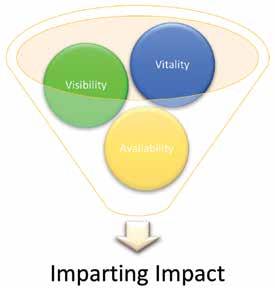
If you’re concerned about losing direct contact with students, make it a priority to stay connected with them. Bus arrivals and dismissals, cafeteria duty, class changes, and club, arts, and athletic events all offer opportunities for you to interact with young people. However, if you’re concerned about that feeling of “leaving” the classroom, then don’t! Find a way every day to pop into classrooms, sit with students, and talk with them about their learning. Research suggests having a pulse on the culture and climate of your building as an administrator is critically important to student success. These visits can serve a dual purpose, too: you can build supportive connections with your teachers while engaging with your students. You might even learn a thing or two! Be engaged in your building’s classrooms, so much so that it doesn’t seem awkward or imposing when you visit. Make it a habit to see and be seen in students’ learning spaces.
Similarly, just being available to your students, faculty, staff, parents, and the community goes a long way in sustaining relationships and positive impact, as John Lambersky writes in the journal Leadership and Policy in Schools This can be difficult, as your time and subsequent schedule may not always be your own. However, prioritizing the needs of your students and staff often starts with being there for them. Set aside office hours in your calendar, if possible, or coordinate informal events for your
students to connect with you, such as breakfasts, snacks, advisory committees, etc. Your presence (visibility) is important, but intentionally upping your engagement (availability) imparts an even greater impact.
increasing, and more opportunities for positive engagement. Often administrators feel so overwhelmed by all the other components of the job that they unintentionally neglect the very people they are called to serve. It may feel counterproductive, but putting people first—particularly your students—will go a long way in ensuring your vitality as a leader.
Finally, your vitality (and sanity!) rests in your ability to manage the balance. Of course, data won’t analyze itself, emails will continue to land in your inbox, and referrals will still need processing; however, prioritizing student interaction, you might find, may alleviate the stress of so many other areas. If students feel engaged, empowered, seen, and heard, research suggests that academic growth follows. Likewise, if administrators work to build strong relationships with students, staff, and parents, they create sustainable, mutually beneficial connections infused with a moral commitment to student success, says Michael Fullan in his book, Leading in a Culture of Change Other studies show that building those type of connections can lead to negative behaviors decreasing, attendance
So, to those amazing educators who have ever thought about taking the plunge into the deep end, into leadership–do it. You have been making an incredible difference in your classrooms, across your grade levels and content areas, and in your communities. And, if you’re like me, someone along the way has probably seen, and likely encouraged, your leadership capacity. I encourage you to be open to the possibility of amplifying your exceptional talents as an educational leader, cultivating greatness in your faculty, staff, and students, and imparting your positive impact throughout the broader educational community. The impact of an engaged administrator willing to impart positive, purposeful experience cannot be underestimated.l
Sarah Tanner-Anderson, EdD, is Assistant Dean of the College of Graduate and Professional Studies at Longwood University, as well as Associate Professor and Program Director of Educational Leadership. She’s a former principal, assistant principal, middle- and highschool English teacher, department and grade-level chair, high-school coach, and club sponsor.
In our ever-evolving world, something else needs to change, too: the way we think about some of our students. You can just look around and see that our public school classrooms are transforming into diverse spaces, where cultural richness has become the norm. In this changing landscape, many of us have thought of English as a Second Language (ESL) students as obstacles we must overcome, as young people
we must find ways to remediate. believe we must have a paradigm shift in that kind of thinking. We must see such students more for the exceptional range of skills, experiences, and perspectives they bring to our schools, and embrace them as the invaluable assets they really are. Such a shift would not only promote inclusivity; it would enhance the learning environment for all students.
As an ESL teacher, I’ve witnessed
the power of this change in perspective. I’ve seen my students make significant contributions to classrooms and school communities by sharing their cultural backgrounds and perspectives. Just by being there, they expose native English-speaking students to different customs, traditions, and global issues, fostering cultural sensitivity, empathy, and an appreciation for diversity.
A couple of years ago, I had the privilege of witnessing an ESL student
of mine share her stories of celebrating Diwali, the Hindu Festival of Lights, in her home country. Through her vivid descriptions and explanations, she provided authentic and engaging insight into Indian culture. Her storytelling deepened her classmates’ understanding and appreciation for the rich tapestry of traditions worldwide. Moreover, during social studies lessons, she became a valuable resource for exploring global issues. Her unique perspective on environmental conservation, influenced by her community’s efforts in her home country, broadened classmates’ awareness of the interconnectedness of these challenges. By promoting cultural exchange, ESL students become catalysts for nurturing global citizens equipped with the skills necessary to navigate an interconnected world. ESL students can also share their unique set of language and communication skills. Often bilingual or multilingual, they can serve as language models, assisting their peers in learning new words and phrases, while providing authentic examples of diverse communication styles. For instance, during a group activity focused on vocabulary expansion, one of my ESL students took the initiative to share her knowledge of Spanish vocabulary related to the topic. She provided explanations of Spanish equivalents for certain words and offered examples of their usage in different contexts. She introduced idioms and expressions commonly used in Spanish-speaking cultures, expanding her peers’ awareness of linguistic nuances. This collaborative learning approach not only enhances language development but also encourages mutual respect and
cooperation among students.
Extensive research demonstrates that bilingualism or multilingualism offers numerous cognitive benefits. ESL students often display enhanced problem-solving abilities, improved creativity, and better critical thinking skills. Recognizing these cognitive abilities shifts the focus from remediation to empowerment, enabling ESL students to thrive academically. Many of my students have incorporated elements from their native language and cultural background into artwork, infusing their work with a sense of authenticity and diversity. This helps
different countries, encountering different educational systems, and facing unique challenges. Sharing stories is an excellent way to learn and broaden perspectives. Understanding different viewpoints encourages empathy and compassion, helping students develop a sense of social responsibility. During a discussion on geographic locations, one of my students eagerly shared her experiences of participating in traditional ceremonies and adapting to new cultural norms. Her vivid descriptions and personal anecdotes transported her classmates to places they have never been and exposed them to customs and traditions they may not have encountered had it not been for her presence in our classroom.
inspire classmates to think outside the box and explore their own artistic potential, as well as supporting an environment that values individual expression and cultural diversity.
Embracing ESL students as assets means building cultural competence in our classrooms, including the ability to communicate effectively and respectfully with individuals from diverse backgrounds. This skill set is increasingly crucial in our globalized world, where cross-cultural collaboration is the norm. Having ESL students in the classroom helps prepare everyone there for a future that will demand cultural understanding and adaptability.
ESL students also bring their histories: experiences of living in
Viewing ESL students as assets encourages moving from a teacher-centered approach to a student-centered one. Teachers become facilitators of learning, and students take on a more active role in their educational journey. By creating opportunities for ESL students to share their knowledge, skills, and experiences, mutual learning and growth flourish. This empowers ESL students, boosts their confidence, and provides them with a sense of belonging in their (perhaps) new educational community.
Young people from faraway lands or different cultures aren’t obstacles in our classrooms—they’re valuable assets and should be celebrated as such. In doing so, we show that we value cultural diversity, intercultural competence, empathy, and global awareness. And we help all our students thrive.l

Parker, a member of the Manassas City Education Association and Virginia’s 2023 Teacher of the Year, teaches English as a Second Language students at Osbourn High School.
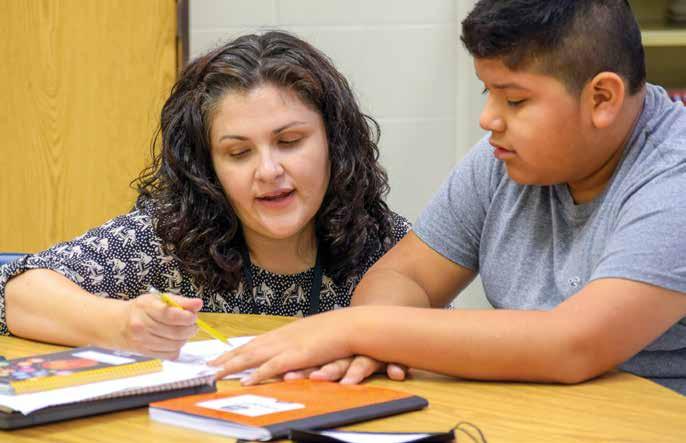
We need to change the way we think about ESL students, says Virginia’s 2023 Teacher of the Year.The author works with some of her ESL students.
Transition and change are embedded in our DNA (think cell division), as well as in our exterior world, both personal and professional. We know this, yet as real and as constant as change is, we often experience it as an intruder—unwanted, scary, and even debilitating.
The forward movement of our lives can be experienced in ways running along a continuum from transfixing immobility on one end of the spectrum to triumphant exultation on the other. Most of us experience change somewhere in between these two extremes, depending on the level of change involved—from minor, almost unnoticed hiccups to the earth-shaking, life-altering, highly impactful transfiguration of one’s life, school environment, and/or community. There is no doubt that for the most part we are creatures of comfort; we seek the familiar and are soothed and comforted by the known.
It’s undeniable, however, that within change great power exists, power that can be either enervating or energizing. Each person, team, organization, and/or
community can decide how to react to this power: Remember, there’s always a choice in how we react to a change experience. One of the great global Renaissance women of our time, Maya Angelou, wisely contributed to the dialogue on change by declaring, “I can be changed by what happens to me, but I refused to be reduced by it.” Clearly her mindset accepts change as inevitable, but something around which an attitude option exists as a choice. In Angelou’s case, she embraces the power she possesses to be resolute about maintaining her balance and purpose, refusing to be diminished in any way. In fact, when looking at Angelou’s life, one could fairly accurately opine that she has embraced change in such a way as to enhance her life (one outcome being wisdom).
We don’t often control the changes that come our way, but we do control our reaction to it. To recognize and embrace that we always have an attitude option is to intentionally see change as an opportunity for positive
benefits and outcomes. Looking at the challenge and power of change, legendary basketball player and coach John Wooden said, “Failure is not fatal, but failure to change might be.” Wooden’s words are useful and energizing, in part because they acknowledge the fact that all of us experience failure, perhaps many times, through the course of our lives, but that failure itself is not fatal. But he speaks powerfully about the locomotive of life as being fueled by change. Again, an attitude option is referenced, however obliquely. So, the challenge that confronts us is how we decide to respond to the transition and change experience. Here are some positive options that may help us successfully navigate change in our own lives:
FIVE ‘ATTITUDE OPTION’ GUIDELINES
1. Keep your eyes on the horizon. It’s easier to navigate the unexpected bumps and detours, and even major roadblocks, when you are looking ahead and keeping your focus on the big, long-term picture. Your destination (and you should have one in mind) can provide an effective antidote to the all-too-frequent transitions you’ll be challenged with in your personal and professional lives. It’s easy to spend time in the weeds—entangled by the minutia of day-to-day detail—and forget, in fact, that there exists a more global perch from which to view your world, and how every piece (including the bumps and detours) fit together with purpose.
2. Always have a Plan B. Whether it’s a shakeup in the workplace, a loss or change of jobs, the loss of a loved one, or any other transition, it’s always good to have a “Plan B.” Remember, if there is nothing else you can count on, you can assuredly count on change being a constant in your life, in ways both great and small. So, the question, “What do I do if ...?” is a valuable exercise. If nothing else, it flexes your attitude option muscle. Think of this as your personal “emergency preparedness plan,” your well-considered toolbox of resources and actions you may employ should you need to in reaction to a life-changing experience. Think broadly as you develop your plans: how they will help sustain, nurture, guide, and inspire you as face changes, challenges, and proverbial bumps in the road.
3. Maintain your physical and emotional well-being. This can be particularly challenging if the change you’re experiencing is not one you sought or desired. However, it is critical to the survival and positive attitude of individuals, teams, and organizations (schools) to maintain a strong sense of individual or organizational
identity. This requires a frequent (almost moment to moment) “weeding” of the mental and emotional garden of thought. It has been said that we humans have literally tens of thousands of individual thoughts per day. And, astoundingly, even when times are good, many of them are negative self-talk. So, the challenge to be “relentlessly positive” is a great and serious one indeed.
4. Build bridges and networks. If you’re fortunate, you have many bridge options to walk above the troubled waters you may be experiencing. However, all too frequently we are rewarded for “going it alone” and for demonstrating “self-starter” qualities. Fine in good times, not so helpful when what you really need to do is reach out to others. Asking for a helping hand, or advice, or a compassionate ear is not weakness—it’s a strength of character that allows people to express their vulnerability. Are you being assigned to a different grade level to teach? Are you moving to a new room in your school, or perhaps to a different school? Engage your network of colleagues to help you navigate the transition. Everyone has had the experience of needing a supportive person during a challenging time.
5. Live, love, laugh. It is essential as an attitude option to use the power of laughter. Norman Cousins taught us this many years ago in his groundbreaking work, Anatomy of an Illness: As Perceived by the Patient. In the many years since his first books were written, scientific studies have confirmed what he taught us: that there is real, healing, therapeutic elements to laughter. Find what it is that brings a smile to your face or, better yet, makes you laugh out loud, and you’ll be well on your way to a much healthier approach to the challenges of change and transition.
When the going gets tough, which it most assuredly will from time to time, it might be a good idea to keep this quote by Robert C. Gallagher in mind: “Change is inevitable—except from a vending machine.”
Let’s go into our work for this new school year with vigor, excitement, and perhaps as importantly, the flexibility and understanding that change is the only constant there is, and that it can be challenging and invigorating!l

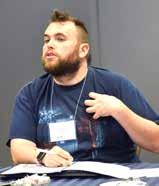
VEA members and leaders got together twice this summer to hone their Union skills, focusing on both instruction and building local power.
High energy and hands-on work marked VEA’s second annual EPIC (Education Professionals in Collaboration) Conference called For Our Students: Daring to Be Bold, beginning with a fast-paced, multimedia keynote speech by Rick Wormeli. He’s a former Fairfax teacher, now an author and speaker, who received Disney’s American Teacher Awards’ 1996 Outstanding English Teacher of the Nation honors.
In a crowd-pleasing presentation entitled, “What We Can Do When We’re Brave Together,” Wormeli focused on being a brave educator in times of significant change, using video, music, humor, and even impersonations (and burning lots of calories) to drive his message home.

“He was funny and inspiring,” said Amanda Ronco of the Falls Church City Education Association. “I will do my best to remember his words in the tough moments.”
After being fired up by Wormeli, EPIC attendees spent the rest of the conference in breakout sessions on a wide range of topics, largely presented by fellow VEA members and including Spanish for educators, literacy, trauma-informed instruction, empowering students for equity, becoming a content developer, holistic classroom management, and more.
At our Union’s Summer Organizing Institute, attendees were im-

The Montgomery County Education Association has won an election of school employees to be their designated representative for contract negotiations with the county school system, following the approval of a bargaining resolution by the school board.
Other collective bargaining developments around the Commonwealth:
• Both the Arlington Education Association and the Falls Church City Education Association won representation elections in the spring and will begin formal negotiations with their school divisions soon.
• Members of the Charlottesville Education Association, after their city’s school board passed a bargaining resolution, are preparing for their representation election.
• In Petersburg, the city’s school board did pass a bargaining resolution, but one that divides school employees by attempting to exclude ESPs from negotiations. PEA members are currently organizing and fighting for a more inclusive resolution.
• Locals throughout Tidewater are gearing up to launch campaigns to have their local school boards pass collective bargaining resolutions.l

mersed in learning how to achieve Union goals by building strength, developing collective power, and working to create locals that are a formidable force in public education policy in their communities.
They did it by directing their time to one of four tracks: Political Involvement, Communications, Collective Bargaining for Locals with Active Campaigns, and Growing your Local.
“I absolutely loved attending the Summer Organizing Institute,” says Virginia Beach Education Association member Cat Evans. “It helped me to better support our

local PAC, VBEA PACE, connect with other VEA members, and hear powerful stories that inspired me. As a union of educators, we have so much to give and share with each other. We have this wealth of untapped skill, knowledge, and intuition. Coming together we can collaborate and help each other grow.”
Optional SOI add- ons were also offered to participants, including a canvassing outing in Spotsylvania County and a book club meeting to discuss Just Mercy, by Bryan Stevenson.l
Princess Moss, an elementary music teacher from Louisa County who served as VEA president from 2005-2008, has been re-elected as vice president of the National Education Association. Prior to serving her first three-year term in that position, she was NEA’s secretary-treasurer for six years and a member of the NEA Executive Committee.
During her time in Virginia, Moss was also elected VEA’s vice president and spent more than a decade on both the VEA and NEA board of directors.l


Need registration and voting information? Want to know which candidates have the recommendation of the VEA Fund for Children and Public Education? For this and more, visit vavoterguide.org—and be sure to watch for next month’s issue of this magazine for the complete lowdown on the 2023 elections.ll
Now’s your chance to run for a council seat or become a retired delegate to the 2024 and 2025 VEA Delegate Assemblies and/or the 2024 and 2025 NEA Representative Assemblies! Petitions and self-nomination forms are available now. Visit vea.link/ vear-elections to find all the information about open positions, how to run, and how to vote. You’ll also find a timeline spelling out candidate requirements and deadlines there. Voting will take place in January 2024.
Email us at vearetired@veanea. org with any questions!l


The National Education Association saluted actress and comedian Quinta Brunson, the creator and star of the hit TV series “Abbott Elementary,” with its highest honor, the NEA Friend of Education Award, at its annual convention this summer.

“ We were honored to present this award to Quinta, who has brought the everyday challenges and joys educators face to the forefront of the public,” said NEA President Becky Pringle. “She gets it. ‘Abbott Elementary’ and Quinta’s character Janine have shown an authentic look at how educators can and do change students’ lives.”
In the show, Brunson plays a dedicated and optimistic second grade teacher, who devotes herself to her students and making positive change in their lives. “Abbott Elementary” doesn’t shy away from the problems facing public schools, including staff shortages, political divisiveness, and low pay, instead addressing them with humor.
“ We have heart in our show,” Brunson told Education Week “And I know that we do show some very real things going on in the school district. I want people to be moved to support schools and teachers in any way they can.”l

If you’re a new VRS member or have recently changed employers, it’s important to take time to familiarize yourself with your retirement plan.
Learn about your benefits. Start with the VRS Member Guide at varetire. org/publications, which provides action steps to tap into VRS benefits in your first weeks and months on the job. Chapter 4 is especially helpful for benefit details.
Check out myVRS Financial Wellness. VRS members have access to myVRS Financial Wellness at varetire.org/financial-wellness, which offers a personalized library of articles, videos, start-here guides and more to help you grow your financial capabilities. Managing student loans and learning to budget are among the most popular topics on the platform.
Hybrid plan members: boost your savings. It’s easy to underestimate the importance of saving early, but choosing to save early in your career can help you build the future you imagine, and it may make only a slight difference in your spending habits today. Consider increasing your hybrid plan voluntary contributions through Account Access at varetire. org/dcp-login. The more you contribute, the more you get in employer matching contributions, up to a 2.5% match when you contribute the maximum 4%. At the Hybrid Plan Learning Channel (varetire.org/ hybridvideos), you can watch a series of videos introducing you to the plan and explaining specific topics.
Engage with VRS. Questions? Visit the Education and Counseling webpage at varetire.org/education to schedule a virtual or in-person member counseling appointment and to see a full list of member education sessions. You can view recorded member education sessions at your leisure. Just click into the topic that interests you and register to view it. You can also connect with VRS on Facebook and LinkedIn for the latest news and highlights.l
When he occupied the Oval Office, President Lyndon B. Johnson once had this to say: “At the desk where I sit, I have learned one great truth. The answer to all our national problems—the answer for all the problems of the world— comes down to a single word. That word is education.”
Now there’s some presidential wisdom.
And it’s wisdom that should tell you a little about the importance of the role you play as we accelerate into a new school year. You’re not just helping young people develop academic and social skills. You’re giving them a sense of what it means to be an educated young man or woman, how to grow and stretch, and how to be a contributing, thriving member of their communities and our nation.
No one’s work is more important. What you do every day has an impact that goes on long past that day—it spreads into your students’ interactions and their spheres of influence for a lifetime. How many professions can say that?
Watching you do that work and doing everything I can to support you in it is more gratifying than I can describe. All I can say is that am so very proud to be the Virginia Education Association’s president because I get to represent you. And that it is my very great honor to welcome you into this fresh start called
the 2023-24 academic year. After all that the Commonwealth’s educators have been through and learned in the last two years, I can honestly say that our public school students have never been in better hands.
I’m also immensely proud of our Union. In the last year, we’ve seen VEA members working together to accomplish great things for our schools, students, and educators. More and more of our members are part of locals that are entering the collective bargaining process, which is a win for all concerned—students, school employees, and communities—because we know that working conditions for educators are learning conditions for students. Our members have also been standing up and speaking up for social justice and fair treatment for all, two foundational aspects of American public schools. It’s exhilarating to see teachers, support professionals, and administrators rallying around all our students and demanding that the rights of everyone in their buildings be protected. No organization in our state does as much good for our public schools as the VEA—let your not-yet-member colleagues know that, because we’ll accomplish even more with more of us standing together.
All the best in the new year. Let me know how I can help.l

Jeffery Keller a Winchester Education Association member and a history teacher at John Handley High School, has been named Virginia’s 2024 Teacher of the Year. He’s been at Handley since 2008 and his current teaching lineup includes Advanced Placement U.S History, African American History, and World History. While being named Teacher of the Year is an individual accolade that Keller calls “a really big honor,” he’s quick to share credit, telling The Winchester Star, “It’s about the team. It’s about Handley and WPS supporting their staff, giving me the freedom to do what want to do in the way I want to do it. Not every school does that, not every division does that, so credit that.”
Keller now becomes Virginia’s nominee for the 2024 National Teacher of the Year and, in addition to a busy speaking schedule, will also meet monthly with Virginia’s Superintendent of Public Instruction Lisa Coons as part of the Teacher Advisory Council, which also includes the state’s seven other Regional Teachers of the Year.
After interviews and other input, a Virginia Department of Education selection committee chose Keller, the Region 4 and Winchester Teacher of the Year, as the state winner. The committee included representatives of professional and educational associations, the business community, and 2023 Virginia Teacher of the Year Fabiana Parker.
Afterward, Keller saluted his students. “I’m thankful for them,” he said. “They’re what it’s all about.”l
Protecting yourself and your students on social media.
You, your students, your colleagues, your neighbors, your college friends, your mom—just about everyone today is walking around with a smartphone and social media access, which means they can post or react to someone else’s post instantly. Like most forms of technology, some use social media for good; others, not so much.
If you’re a school employee, social media presents its own set of issues. It’s a challenge to keep your personal and professional lives separate there—and it’s your responsibility to protect yourself, your students, and your school online.

Here are a few guidelines on best practices for educators, provided by Common Sense Education (commonsense.org), designed to help you to both protect privacy and to set an example of safe online behavior for your students. Common Sense notes, “To be true digital citizens, our students need teachers who model prosocial, creative, and responsible social media use.”
To begin, before you post anything from your classroom or school, ask yourself these three questions
1. Is there anything in this post that personally identifies me or my students?
2. Do I have explicit permission to post it?
3. Is what I’m posting furthering the learning of my students or other learners?
Taking time to pause and consider these questions will get you a long way.
More detailed information from Common Sense: Locate and review your school or district’s social media guidelines.
Basically, everything you might do hinges on the existing policies that have been set up where you work, so check those out first. You should also look into your school or district’s acceptable-use policy.
If guidelines don’t exist, work with your administrators and tech specialists to set them up.
You might discover your school or district doesn’t have guidance available, or existing guidance is outdated or not readily available. If that’s the case, let your administrators and tech leads know.
Use family consent/opt-out forms.
If you’re planning on sharing activities happening in your classroom, get consent from parents or caregivers. You might also advocate to have your school offer detailed opt-out forms for parents and caregivers.
Make a list of students whose parents and caregivers haven’t given consent—and keep it private.
Maintain and reference a private, secure list of students who’ve been opted out.
Strongly consider maintaining separate accounts for personal and professional use.
This might be a rule already spelled out by your school or district. If not, it’s something to seriously consider.
Regularly audit the privacy settings on all of your social media accounts. Social media platforms each come with their own risks to personal info and data. You’ll want to do a deep dive into the privacy settings of each. Since these settings also change, you’ll want to check back on them regularly. To get started, turn off all location-sharing data.
A few additional pointers from the Ohio Department of Education’s Office of Professional Conduct:
• You should consider every electronic communication to be a lasting record.
• Expect to be accountable for what you post.
• Be very careful with the tone of your posts.
• Never post inappropriate activities, images, or words.
• Never badmouth students, colleagues, your boss, parents, or the community.
• Do not follow or “friend” students.
• If you have the slightest doubt about a post, don’t put it up.
• Don’t use “reply all” unless you really mean all.l
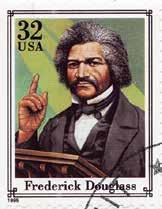
As man is the highest being on earth, it follows that the vocation of teacher is among the highest known to him. To properly teach is to induce man’s potential and latent greatness, to discover and develop the noblest, highest and best that is in him… Some know the value of education by having it. know its value by not having it. It is a want that begins with the beginning of human existence and continues through all the journey of life. Of all the creatures that live and move and have their being on this green earth, man, at his birth, is the most helpless and the most in need of instruction. He does not know even how to seek his food… From first to last, his existence depends upon instruction.
Yet this little helpless weakling, whose life can be put out as we put out the flame of a candle, with a breath, is the lord of creation. Though in his beginning, he is only potentially this lord, with education he is the commander of armies; the builder of cities; the tamer of wild beasts; the navigator of unknown seas; the discoverer of unknown islands, capes and continents, and the founder of great empires, and capable of limitless civilization.l
“On the Blessings and Liberty of Education”
— Frederick Douglass,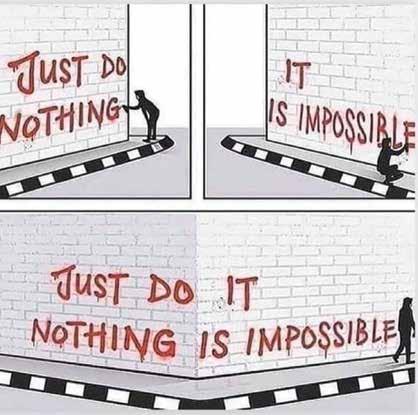

Looking for some help in wrapping up lessons in ways that clear up misunderstandings, check for understanding—and add a bit of fun? Here are some suggestions from Edutopia.org:
• Create “headlines.”
Pair students and tell them to imagine they’re writing news headlines that summarize what they’ve learned.

Alternatively, do this as an entire-class activity.
• Make your classroom a beach. Write reflective questions on a beach ball, using dry erase markers. (Examples: What is one thing you learned from today’s lesson? What was challenging about today’s lesson?) As the ball bounces around the room, use responses to generate further discussion.
• Quiz the next class. Have students use the free platform Kahoot! to come up with quiz questions and multiple-choice answers to give to their peers studying the same material in other classes.
• Two-dollar summaries. As students to write a two-dollar (or more) summary of the lesson. Each word they use is worth 10 cents.l
If the idea of solid professional growth, fueled by information created by your colleagues, appeals to you, don’t miss VEA’s Learning Portal.
Created by our Department of Teaching & Learning, the Portal offers you the opportunity to acquire and sharpen instructional skills, to do so on your own schedule, and to create your own path to professional excellence. So far, there are more than 60 online courses on the Portal, many designed by VEA members who have served as content developers so far. All told, it’s a tremendous added value to your VEA membership—and it’s free!
A brief sampling of courses currently available includes several modules for teaching English Language Learners; IEP Development; Creating Safer Schools for LGBTQ+ Students; National Board Certification; Social Emotional Learning; and Collective Bargaining. There’s also a lineup of webinars on topics that include teaching in a post-pandemic world, culturally responsive teaching, and building a humanized classroom.
“ The Learning Portal is a tool that allows members to learn flexibly and at their own pace, which is something many educators are looking for,” says Krishawna Goins, a Loudoun Education Association member and first grade teacher, who is a content creator.

Bristol VEA member Brad Hutchinson, also a content creator, agrees: “The ability to do professional development easily is always something that we need, both for our growth and to fulfill PD requirements in our school division and for state recertification.”
Don’t forget that it’s free, too! “Members like to see value for their dues dollars,” says Amy Verner of the Prince William Education Association, another content creator, “and this is another way to achieve that. The portal offers high-quality, educator-created content about relevant issues.”
Check out VEA’s Learning Portal at https://veaportal.learnupon.com/dashboard follow the step-by-step instructions, and get your own journey started!l
In a report released to mark the 69th anniversary of the historic Brown v. Board of Education Supreme Court decision, the U.S. Department of Education says that our public schools still have a significant segregation problem, noting that, “Despite research suggesting the wide-ranging benefits associated with attending racially and socioeconomically integrated schools, isolation in schools continues.”
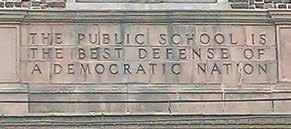
According to the State of School Diversity report:
• 3 in 5 Black and Latino students go to school where students of color make up at least 75 percent of enrollment.
• About half of White students are in schools in which students of color represent less than 25 percent of the student population.l
70
Percent of U.S. public schools that report an increase in students who have sought mental health services since 2020.l
Source: National Center for Education Statistics
Expecting all children the same age to learn from the same materials is like expecting all children the same age to wear the same size clothing.
— Madeline Hunter





Recently, a Project Wild training session was held for teachers at Lord Botetourt High School in Daleville, where I teach. Project Wild, created by the Virginia Department of Wildlife Resources, is an across-the-curriculum program focused on preK-12 conservation and environmental education. Through in-service training, it provides resources teachers can use to show students how to think critically about the needs and habitats of wildlife.
“ The beauty of Project Wild is that teachers can modify activities for different grade levels and subjects,” says Courtney Hallacher, Virginia’s Project Wild Coordinator, a former Virginia public school teacher who taught science for 17 years. “The activities also encourage teachers to take kids outside and do science instead of just reading about it. The students become participants and get to see where ecological concepts lead them, making them critical thinkers.”
She adds that lesson plans are typically aligned by topics with skills to be learned. For example, a student might be asked to create an organism based on a certain type of habitat, or to figure out which adaptations the creature might need to survive and thrive.
Old Dominion teachers are always concerned about our Standards of Learning, and Project Wild certainly takes this into account. While the lessons in the preceding paragraph are custom-made for a science SOL, of course, an English teacher like me could fulfill the persuasive essay requirement by having students debate the ethics of whether humans should intervene to save the organism the students created. And in a short story, my Creative Writing students
could give life to the organism they devised.
Hallacher can’t emphasize enough the need for today’s youngsters to spend more time outside—and away from their electronic devices. Project Wild is all about encouraging youngsters to venture outside.

“It takes a special teacher to ignite young people’s passion for the world around them,” she says. “Inside, students can learn about scientific concepts, but they often can’t truly connect them to real life. But when young people go outside, their natural curiosity is nurtured. Even in the sterile grass of a schoolyard, quite a bit of life exists, if we take the time to search for it.”
Tim Miller, education and outreach coordinator for the Mountain Castles Soil and Water Conservation District, led our Project Wild Workshop. Miller, also a former public school teacher, volunteered for the program because so few people were doing so in Southwest Virginia. Hallacher notes that across Virginia, some 60 volunteers cover most of the state, but some areas definitely need more.
“A major goal of my agency is for students to have common outdoor experiences through field trips, and then for me to follow through later with classroom visits and instruction,” says Miller. “I want to create connections, which means fostering relationships between young people and their environment.

Paul Craft, a guidance counselor at Lord Botetourt, explains why he chose to attend the Project Wild workshop: “These days, most kids don’t go outside unless it’s to participate in organized sports. There’s so much more to life than staring at a screen and playing Fortnite. If you convince kids to go out into nature, they may just find an almost spiritual connection and enter a world that is so much better for them than the little screen world is.”

At our workshop, Miller offered a variety of activities, stating that he has learned that the activities he models are often the first ones that teachers experiment with themselves. For example, an activity called “Oh, Deer” was a study in population dynamics and how the variables of food, water, and shelter influences whitetail deer numbers.
“Interview a Spider” was in a talk show format, with participants’ role-playing as reporters. Other participants acted as the animal species being interviewed, which meant they had to gain knowledge of the fauna’s habitat and food sources. Another activity covered the endangered black-footed ferret and what its decline in numbers meant to prairie dogs and the farmers whose land the latter creature dwells on.
To learn more about Project Wild, visit https://vea.link/ ProjectWild l
A publication of the Virginia Education Association 116 South Third Street, Richmond VA 23219 veanea.org vea4Kids

This November, I’m voting for candidates who will prioritize education for all, and fully fund our public schools! What are you voting for?

